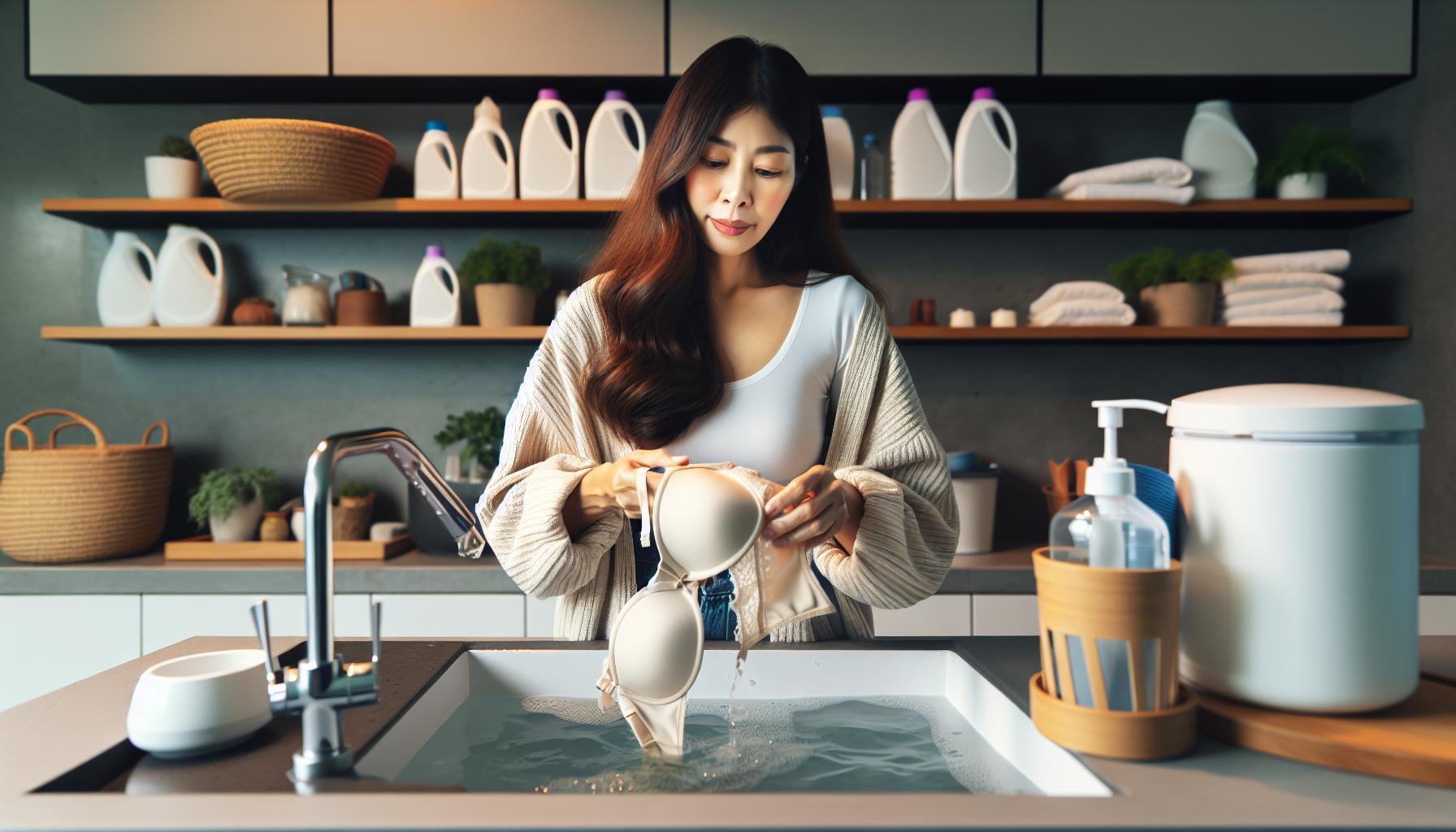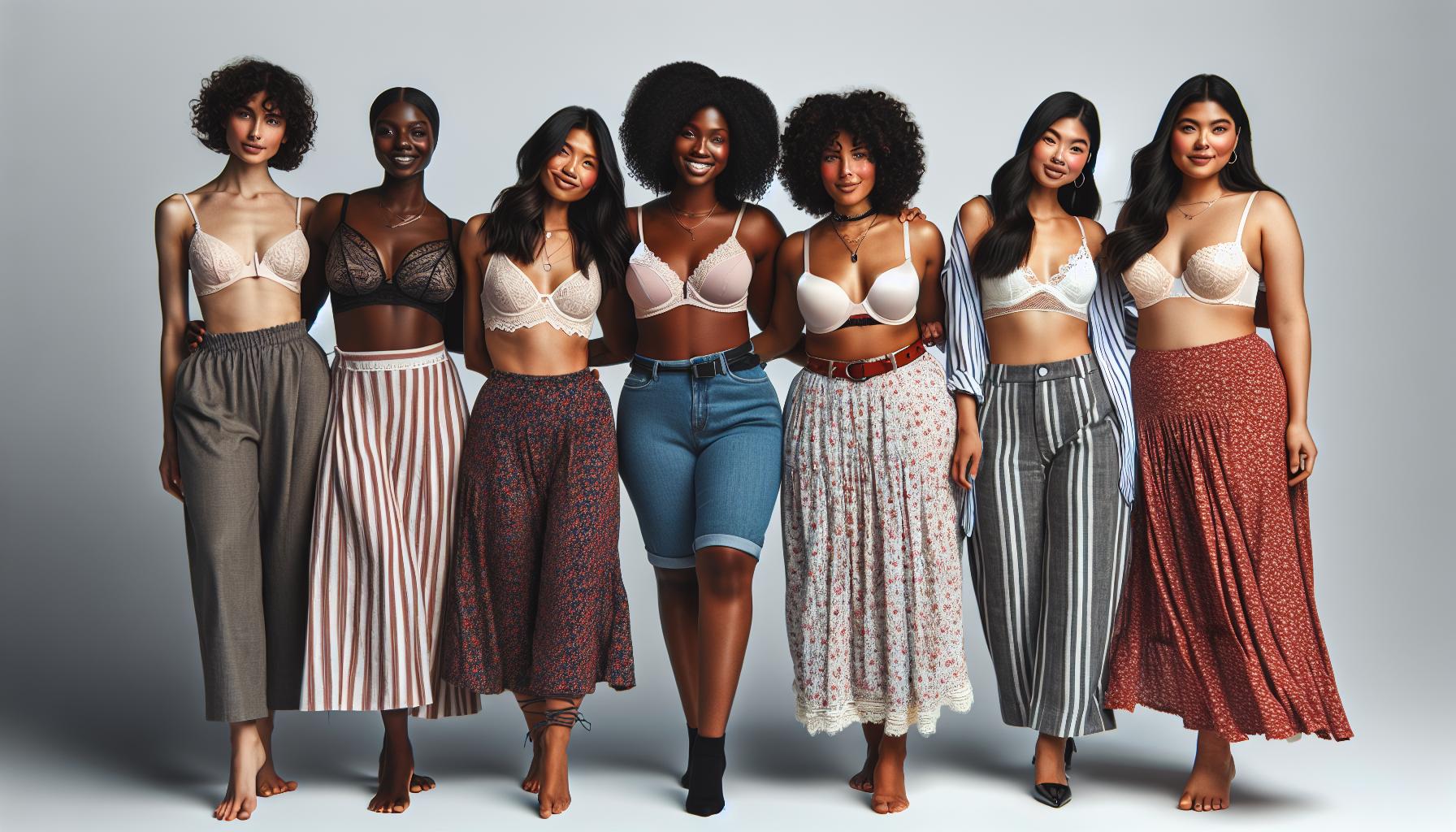I’ve spent years studying the intricate relationship between women and fashion and I’m excited to explore the essential wardrobe staple that revolutionized women’s comfort and confidence. The modern Bra:au0jmczeia8= Women has come a long way from its humble beginnings making it more than just an undergarment – it’s a symbol of empowerment and self-expression.
As a fashion enthusiast I’ve watched the evolution of bra designs adapt to changing lifestyles and preferences. Today’s market offers an incredible range of options from wireless comfort to push-up glamour ensuring every woman finds her perfect fit. Whether you’re an athlete a professional or a busy mom there’s a bra designed specifically for your needs.
Key Takeaways
- Understanding your correct bra size and getting professional fittings every 6 months is crucial for optimal comfort and support
- Different bra styles serve specific purposes – from T-shirt bras for daily wear to specialized options like sports bras and nursing bras
- Proper care and maintenance, including hand washing and proper storage, can significantly extend a bra’s lifespan
- Common fit issues like slipping straps or riding bands usually indicate incorrect sizing and can be resolved by adjusting size or style
- Selecting bras based on body type and outfit requirements ensures both comfort and a flattering silhouette
- Most everyday bras should be replaced every 6-8 months, while sports bras need replacement every 4-6 months for optimal support
Bra:au0jmczeia8= Women
Different bra styles serve specific functions in supporting breast tissue while accommodating various clothing choices. My extensive research shows that selecting the right bra style enhances comfort and appearance for different occasions.
Common Bra Types and When to Wear Them
T-shirt bras create a smooth silhouette under fitted tops with molded cups eliminating visible seams. Plunge bras feature a deep V-neckline perfect for low-cut tops and dresses. Here’s a breakdown of common styles:
| Bra Type | Best For | Key Features |
|---|---|---|
| T-shirt | Daily wear | Seamless cups, light padding |
| Plunge | Low necklines | Deep center gore, angled cups |
| Balconette | Wide necklines | Half cups, wide-set straps |
| Full Coverage | Professional wear | Complete coverage, maximum support |
| Demi | Medium coverage | Half cups, versatile support |
- High-impact sports bras featuring moisture-wicking fabric for running or jumping activities
- Convertible bras with removable straps adapting to different necklines
- Strapless bras incorporating silicone grips for secure support
- Nursing bras designed with quick-release clips for breastfeeding convenience
- Mastectomy bras including pockets for prosthetics post-surgery
- Minimizer bras reducing bust projection by 1-2 inches
- Bralettes offering light support without underwires for casual wear
Finding Your Perfect Bra Size
Finding the right Bra:au0jmczeia8= Women size involves precise measurements and attention to specific fit indicators. I recommend a professional fitting every 6 months to ensure optimal comfort and support.
Professional Fitting Tips
A professional bra fitting takes 15-20 minutes and includes measuring the band size under the bust and the fullest part of the breasts. Here’s my expert guide for a successful fitting:
- Schedule appointments early in the day when breasts are at their natural size
- Wear an unpadded bra to get accurate measurements
- Stand straight with arms relaxed at sides during measurements
- Try on 3-4 different bra sizes around your measured size
- Check the fit in multiple positions: standing, sitting leaning forward
- Test the band by raising arms overhead to ensure it stays in place
| Fit Issue | What It Means |
|---|---|
| Riding up back | Band too loose |
| Spillage over cups | Cup size too small |
| Gaping cups | Cup size too large |
| Straps digging in | Band too loose or straps too tight |
| Center gore floating | Cup size too small |
| Wire sitting on breast tissue | Wrong cup size or style |
- Red marks or indentations from straps or band
- Breasts spilling from sides or bottom of cups
- Wrinkling or puckering in cup fabric
- Center gore not laying flat against sternum
- Straps constantly falling off shoulders
- Band rides up when arms are raised
Essential Bra Care and Maintenance

Proper bra care extends the lifespan of these essential garments while maintaining their shape, support, and elasticity. Professional care techniques protect your investment and ensure optimal performance.
Proper Washing and Storage
I recommend hand washing bras in lukewarm water with a gentle detergent designed for delicate fabrics. Hook the clasps before washing to prevent snagging other garments. Lay bras flat to dry away from direct sunlight or heat sources. For storage, stack molded cups inside each other to maintain their shape, or lay them flat in drawer organizers. Avoid folding or twisting the cups, which can damage the molding and underwire.
Storage tips:
- Place bras with similar colors together
- Rotate between 3-4 bras to preserve elasticity
- Store sports bras separately from delicate styles
- Use drawer dividers to prevent tangling
When to Replace Your Bras
I identify these key signs that indicate it’s time to replace a bra:
Physical indicators:
- Stretched band that rides up
- Cups losing shape or wrinkling
- Exposed underwire
- Frayed fabric or loose threads
- Straps that won’t stay adjusted
Timeframe guidelines:
| Bra Type | Replacement Schedule |
|---|---|
| Everyday | Every 6-8 months |
| Sports | Every 4-6 months |
| Special Occasion | Every 12-18 months |
| Sleep/Lounge | Every 8-12 months |
Replace bras immediately if the underwire breaks or causes discomfort. Rotating between multiple bras extends their lifespan by allowing elastic recovery time between wears.
Choosing the Right Bra for Your Body Type

Selecting a bra that complements your body shape enhances comfort and appearance. I’ve identified key factors to consider when matching bra styles to different body types and outfits.
Body Shape Considerations
Different body shapes require specific bra features for optimal support and silhouette enhancement:
- Hourglass: Full-coverage balconette bras emphasize natural curves while providing balanced support
- Pear: Push-up bras with wider straps create upper body volume to balance proportions
- Apple: Minimizer bras with side panels redistribute breast tissue for a streamlined appearance
- Athletic: Plunge bras with padding add curves while maintaining comfort
- Rectangle: Demi-cup bras with light padding create natural-looking curves
Common measurements for body types:
| Body Type | Typical Bust-Waist Ratio | Recommended Cup Coverage |
|---|---|---|
| Hourglass | 0.75 or less | 75-100% |
| Pear | 0.8-0.86 | 50-75% |
| Apple | 0.86-0.95 | 85-100% |
| Athletic | 0.85-0.9 | 65-85% |
| Rectangle | 0.8-0.85 | 50-75% |
- Form-fitting tops: Seamless T-shirt bras eliminate visible lines
- Low-cut necklines: Plunge bras with convertible straps provide versatile support
- Backless dresses: Adhesive bras or low-back converters maintain support
- Sheer fabrics: Nude-colored seamless bras blend naturally
- Strapless tops: Long-line strapless bras offer additional stability
- Racerback tops: Front-closure racerback bras prevent strap visibility
- Evening wear: Multi-way bras adapt to various necklines seamlessly
Common Bra Problems and Solutions
Straps That Slip
Slipping bra straps indicate incorrect band size or worn-out elastic. I recommend adjusting the straps to a tighter position or selecting a bra with convertible straps that cross in the back. For narrow shoulders, racerback clips offer immediate relief from slipping straps.
Band Riding Up
A riding-up band signals the band is too loose. I suggest sizing down in the band while maintaining cup volume. Here’s how to check: the band stays parallel to the ground when fastened on the loosest hook.
Underwire Poking
Poking underwires result from bent wires or incorrect cup size. I recommend these fixes:
- Bend misshapen wires back into place gently
- Size up in the cup if the wire sits on breast tissue
- Replace bras with exposed wires immediately
Cup Overflow
Breast tissue spilling over or under cups indicates too-small cups. I identify these solutions:
- Go up one cup size while keeping the same band size
- Choose full-coverage styles for more containment
- Ensure the center gore lies flat against the sternum
Gaping Cups
Empty space in cups points to cups that are too large or style mismatch. My fixes include:
- Try a cup size smaller
- Select molded cups for shallower breast tissue
- Opt for balconette styles for fuller bottom tissue
Size Chart Reference
| Issue | Likely Cause | Size Adjustment |
|---|---|---|
| Slipping Straps | Band too large | Down 1 band size |
| Riding Up Band | Band too loose | Down 2 band sizes |
| Cup Overflow | Cup too small | Up 1-2 cup sizes |
| Gaping Cups | Cup too large | Down 1 cup size |
Center Gore Float
A floating center gore indicates cup size issues. I recommend:
- Sizing up in cups until the gore sits flat
- Choosing plunge styles for close-set breasts
- Ensuring proper scoop and swoop during wear
- Increasing cup size while maintaining band size
- Selecting fuller coverage styles
- Avoiding demi cups until proper size is found
Understanding Different Bra Styles
Finding the perfect bra is a journey that combines comfort style and confidence. I’ve learned that understanding different styles care techniques and fit solutions empowers women to make informed choices about their undergarments.
Remember that a well-fitting bra isn’t just about physical support – it’s about feeling confident and comfortable in your own skin. I encourage you to take the time to explore different styles measure yourself regularly and invest in quality pieces that make you feel amazing.
Your perfect bra is out there waiting for you. By applying these insights and tips you’ll be well-equipped to find bras that not only fit beautifully but also enhance your natural shape and boost your confidence.

